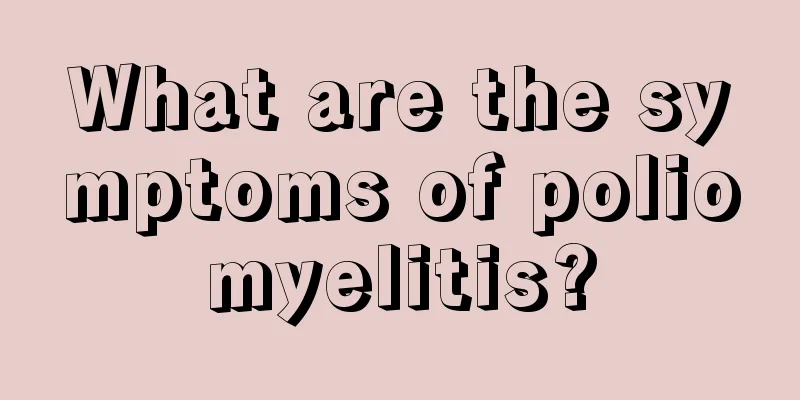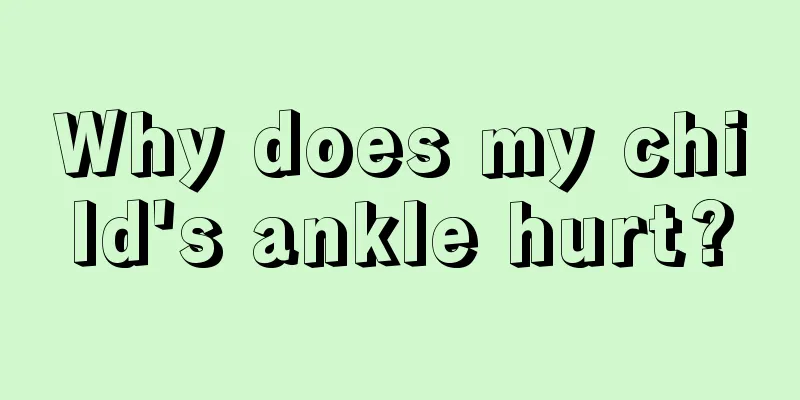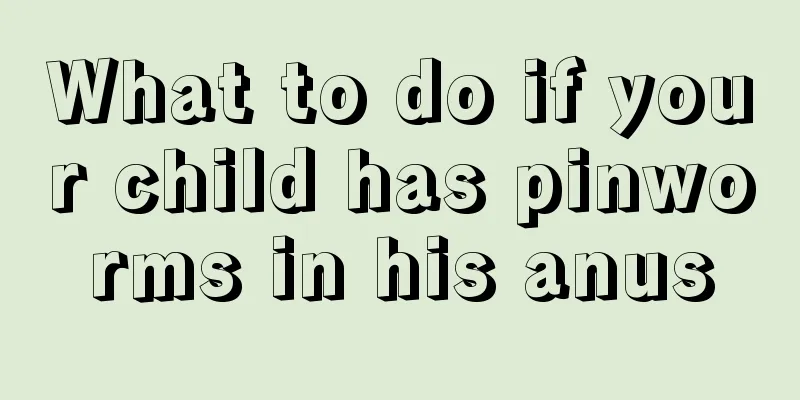What are the symptoms of poliomyelitis?

|
In rural areas of the old society, due to limited medical conditions, infants and young children who contracted polio would often be left with lifelong disabilities. With the popularization and promotion of medical technology, this disease and its sequelae are now less and less common. Polio is more common in infants and young children, and rarely in adults. The virus damages the motor neurons in the spinal cord or affects the brain stem and meninges, causing muscle paralysis and motor dysfunction. 1. Early symptoms of polioSymptoms of prodromal polio include fever, fatigue, general malaise, upper respiratory tract infection and gastroenteritis, which last for 1 to 4 days. In the early stage of paralysis, fever may occur again 1 to 6 days after the disappearance of the prodromal symptoms (bimodal fever). In this stage, the patient may enter directly from the prodromal stage or develop the disease directly in this stage, with symptoms such as high fever, severe headache, vomiting, stiff neck, positive Klinefelter's sign, etc. At the same time, the symptoms of polio often include muscle pain all over the body, sweating, etc. 2. Main symptoms of polio 1. Limb muscle atrophy and weakness, limb deformity, difficulty in upper and lower limb movement, joint instability, unequal length of bilateral limbs, etc. 2. Hip joint contracture, flexion, relaxation and instability, or even hip dislocation. Knee flexion deformity and calf bending inward or outward are symptoms of polio sequelae. 3. The symptoms of polio sequelae also manifest in the feet, and various deformities of the feet may occur. For example, the heels or toes cannot touch the ground when walking, or the feet may be inverted and walk on the outside of the instep. 4. In addition, deformities may also occur in other parts of the body, such as deformities of the upper limbs, curvature of the spine, tilt of the pelvis, etc.
Polio cannot be completely cured if it has sequelae, and medical rehabilitation is an important aspect of the patient's comprehensive recovery. It runs through the entire process of the patient's recovery. This type of work includes: surgical treatment, functional training, rehabilitation nursing, psychological rehabilitation, orthotics, walkers and other rehabilitation projects, acupuncture, massage and other traditional Chinese medicine therapies, etc. The goal of polio treatment is to control symptoms in the hope that the infection will resolve naturally. Symptomatic treatments include pain medication, physical therapy, braces and orthopedic shoes, or even surgery to promote muscle recovery. When the disease is serious, you may need to rely on auxiliary equipment to breathe in order to ensure your life.
1. Do not eat too much sugar, because the bacteria in the mouth will ferment the sugar, which can cause tooth decay and affect appetite. 2. Don’t be picky about food, as it will cause malnutrition. 3. Do not consume too much ginger, onion, MSG, pepper, wine and other condiments. 4. Do not eat warm tonic food excessively, because children have a pure yang body and only need nourishing and refreshing food. 5. Do not eat fried, spicy, greasy, hot, or other irritating foods and foods that are difficult to digest. This is because children have a hot constitution and eating fried and other hot foods can easily cause fever. |
<<: What should I do if my child has a sore throat?
>>: Why does the baby's stool smell like rotten eggs and has a lot of farts?
Recommend
Diapers contain excessive formaldehyde?
Diapers are something that babies use frequently,...
What should I do if my baby eats desiccant?
Many parents, if they are not careful, will cause...
Why does my baby have green foamy stool?
Sometimes babies who have just turned one month o...
Can babies eat lotus root?
The baby has just come into this world from the m...
What to do if your child has anal fissure bleeding
Many children do not like to drink water or eat f...
What causes headaches in 4-year-old children?
In people's concepts, children are unaware of...
Can babies eat lobster? Please learn the correct way to eat
Lobster is very nutritious. In addition to common...
8-year-old boy wets the bed
In most people's definition, bedwetting mainl...
How to treat a crying newborn
The problem of newborns always crying often cause...
How to use medicine for children's cough
I believe that many parents should be very famili...
What should I do if my baby has red spots on his body?
Every parent is always afraid that their baby wil...
Can a two-year-old child eat donkey-hide gelatin?
Parents of today's children are always worrie...
What is the reason why children cry? These factors are the most common!
For younger children, because they cannot express...
What cup is good for babies to drink water?
When giving babies water, many parents always fin...
What can children eat to moisten the lungs and relieve cough?
In autumn, the weather is dry and there is less m...









